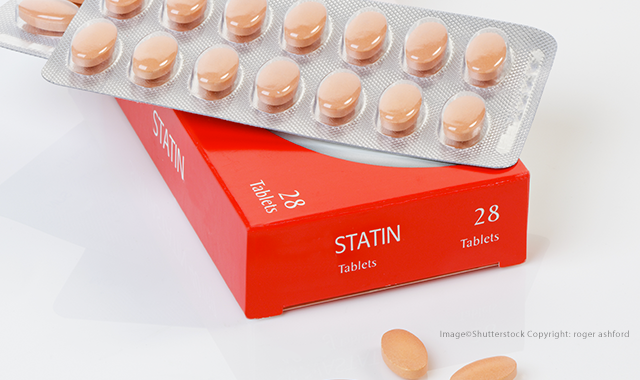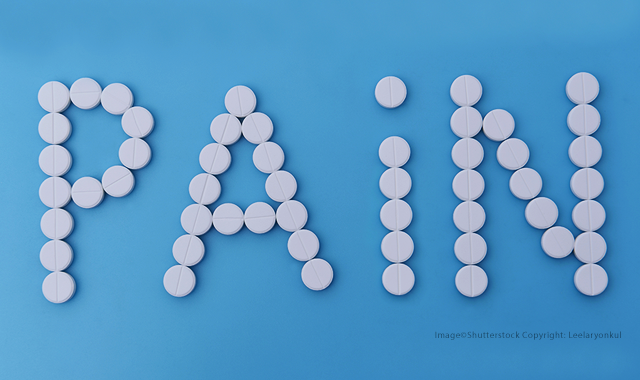Major safety concerns with top-selling prescription drugs
Major safety concerns exist for many top-selling prescription drugs including benzodiazepines/prescription sleep aids, anticoagulants, cholesterol-lowering statins, oxycodone and hydrocodone, and stimulants. The following provides an overview of these classes and issues.

Dr David Gortler
Major safety concerns exist for many top-selling prescription drugs including benzodiazepines/ prescription sleep aids, anticoagulants, cholesterol-lowering statins, oxycodone and hydrocodone, and stimulants. The following provides an overview of these classes and issues.




Benzodiazepines/prescription sleep aids
Benzodiazepines are most commonly indicated for the short-term treatment of anxiety or insomnia, but are used off-label more often than not in the long-term treatment of these conditions. The long-term safety of benzodiazepines has recently come into question for reasons unrelated to their sedative or antianxiety effects.
One recent, prominent study reported the results of ~33,000 subjects who were examined.1 It found a statistically increased incidence of death or cancer in the over 10,500 subjects who were taking sleep aids versus the almost 24,000 who were not. This study included patients who used over-the-counter sleep aids such as diphenhydramine and melatonin, and this drug safety signal can potentially be extrapolated to diphenhydramine and melatonin. The study potentially represents a very significant safety signal, the results of which will need to be repeated prior to any potential reactions from formulary committees and FDA.
Long-term use of these drugs can result in memory loss, daytime confusion, and amnesia. Benzodiazepines and other prescription sleep aids carry a scheduled designated by the DEA as controlled substances. Smaller studies have shown that use of benzodiazepines has been linked to dementia or Alzheimer’s disease.2



Anticoagulants
Anticoagulants (dabigatran, rivaroxaban, apixaban, vitamin K antagonists) and antiplatelet agents (acetylsalicylic acid) are prescribed for secondary prevention of venous thromboembolism. Anticoagulants cause bleeding complications in patients with reduced drug excretion or metabolism due to physiologic functional impairment, such as renal or liver functions. Some concomitant drugs, such as antiplatelet or nonsteroidal anti-inflammatory drugs, may enhance antithrombotic response.
In the newer (non-coumarin, non-aspirin) factor-specific oral anticoagulants, there are no readily available specific antidotes to reverse the activity of these clotting-factor specific oral agents in the event of bleeding from overdose or trauma from injury. Whole blood transfusions that include clotting factors and nonspecific hemostatic reversal techniques are the only remedies.



“Statin” cholesterol-lowering statin medications (HMG-CoA reductase inhibitors)
Lipid-lowering statin drugs are the top selling drugs in the United States. In 1979, fluvastatin was brought to market followed by lovastatin, pravastatin, simvastatin, atorvastatin, rosuvastatin, and pitavastatin. Statins have been proven to be beneficial in patients with elevated low-density lipoprotein (LDL) cholesterol. The newer “type 2” statins, which include atorvastatin and rosuvastatin, are synthetic compounds which have proven to be the most effective drugs for lowering LDL cholesterol and preventing stroke in long-term clinical studies. The popularity of statins are known to even the most casual followers of the pharmaceutical industry. A “blocker buster” drug is any drug which achieves one billion dollars worth of sales within a one-year period. Atorvastatin (Lipitor, Pfizer) was the first drug to achieve “super blockbuster” status, selling over 10 billion dollars with of medication in a one year period.
The clinical evidence that lowering LDL cholesterol reduces cardiovascular risk has been proven in many small- and large-scale clinical trials examining hundreds of thousands of patients and volunteers. Statins are the preferred first-line treatment in patients eligible for drug therapy and who have failed therapeutic lifestyle interventions.
It’s a bit unfair to include statins in as a class with safety concerns, as statins have been credited for saving millions of lives in the United States alone since their advent. Statins have been credited with the declining worldwide incidence of heart attacks, cardiovascular disease, stroke, and all-cause mortality. Evidence supporting use of statin therapy to reduce LDL cholesterol and the subsequent risk of coronary heart disease is remarkable. Over the last decade, use of statin therapy increased 12-fold from 2% to 25%.3
Although the benefits of statins are indisputable, statins do have established adverse reactions. Due to their overwhelming positive clinical data, statins are among the top three prescribed medications in the US and the safety findings are relatively low when one compares the sheer number of individuals who are taking the medication.
Muscle-related toxicities have been reported with statin usage. Myalgia can progress to myopathy, which can progress to rhabdomyolysis. Rhabdomyolysis is ill defined in the medical literature and is routinely misdiagnosed, but a true case is considered a medical emergency and can have up to a 20% incidence of mortality if patients aren’t immediately hospitalized and statins discontinued. Different statins can cause different incidences of muscle-related adverse events including rhabdomyolysis, but the incidence reported in the medical literature and by FDA seems to be highest with simvastatin (Zocor, Merck) for both myopathy and rhabdomyolysis. Since there is no perfect consensus within the medical literature, an experienced rhabdomyolysis expert can help differentiate the myalgia myositis myopathy and rhabdomyolysis based on symptoms and laboratory findings.



Oxycodone and hydrocodone
Oxycodone and hydrocodone are semisynthetic opioid narcotic pain medications. Oxycodone has been available for over two decades in multiple preparations including: alone as an immediate-release agent (IR oxycodone), alone as a extended-release variety (Oxycontin; Purdue Pharma), and as an immediate-release agent in combination with acetaminophen.
Oxycontin is designed with abuse-resistant technology to prevent from being crushed or inhaled, but this technology is still under patent from the manufacturer, Purdue Pharmaceuticals. Because of this patent protection, the cost of equivalent Oxycontin is significantly and disproportionately higher than the generically available IR oxycodone. Equivalent mg prescriptions can be as high as 5 to 10 times the cost of IR oxycodone, a cost which does not justify its non-abusable technology. The very significant price difference discourages noninsured patients from purchasing this drug. Even insured patients can have very high deductibles or copayments for Oxycontin, which in some cases may exceed the cost of outright purchasing an equivalent mg number of generic IR oxycodone. Formulary managers would be wise to take note of this important pharmacoeconomic discrepancy. In particular hospital formulary managers should note that oxycodone abuse is quite unlikely to occur by patients in a hospital setting, as medications are directly administered to patients by hospital staff.
Oxycodone was cited as the number one drug responsible for overdoses for many years, but according to FDA’s website, many of those overdose cases were related to liver toxicity from the acetaminophen content in oxycodone/acetaminophen preparations.4 In 2011, FDA proposed limiting the strength of acetaminophen in narcotic prescription drug products to 325 mg per tablet, capsule, or other dosage unit, ostensibly making these products safer for patients by reducing the risk of severe liver injury associated with acetaminophen. FDA also recommended a schedule change. This law went into effect for all pharmacies in October 2014.
The potential full safety effect of this federal regulatory schedule change and acetaminophen dosage is not yet a year old and the actual epidemiological effect therefore remains unknown as of this writing. Experts in drug safety are undecided as to whether the 175 mg decrease in acetaminophen content and the DEA’s schedule change will appreciably decrease the safety problems associated with all narcotic and acetaminophen-containing combination products. Prescriber oversight remains the clearest path to addressing narcotic abuse.


CNS stimulants for obesity and ADHD
We live in a society that has begun equating leanness with beauty. Perhaps the only thing that would be better than a pill to help you lose weight would be a pill that makes you more beautiful. In fact, many fashion designers and advertisers promote and equate beauty with the near absence of body fat, which isn't necessarily all that healthy. Stimulants are among the least expensive options in treating obesity. Phentermine acts as a stimulant and energy source to compensate for a lack of caloric intake. Stimulants as a single moiety are at best only modestly effective in achieving weight loss and achieving long-term weight maintenance.
Related: [BLOG]: Obesity drug safety review
In younger patients, stimulants for ADHD drugs are typically prescribed on vague diagnostic assessments or second- or third-hand recommendations from school teachers, administrators, or counselors. The long-term safety /cognitive effects from taking stimulants in children are unknown.
References
Kripke DF, Langer RD, Kline LE. Hypnotic’s association with mortality or cancer: a matched cohort study. BMJ Open. 2012;2:e000850.
Billioti de Gage S, Moride Y, Ducruet T, et al. Benzodiazepine use and risk of Alzheimer’s disease: case-control study. BMJ. 2014;349:g5205.
National Center for Health Statistics. Health, United States, 2010: With Special Feature on Death and Dying. Hyattsville, MD: National Center for Health Statistics; February 2011. http://www.ncbi.nlm.nih.gov/books/nbk54386. Accessed July 9, 2015.
FDA. FDA drug safety communication: prescription acetaminophen products to be limited to 325 mg per dosage unit; boxed warning will highlight potential for severe liver failure. http://www.fda.gov/Drugs/DrugSafety/ucm239821.htm. Accessed July 9. 2015.
David Gortler, PharmD, is a drug safety expert and a former FDA medical officer and neuropharmacology expert at FormerFDA.com.
Novo Nordisk Terminates Collaboration with Hims & Hers
June 23rd 2025The FDA had resolved the shortage of Wegovy in April, and telehealth providers were advised to stop selling compounded semaglutide products. Novo Nordisk said that Hims & Hers continues to offer these compounded drugs.
Read More